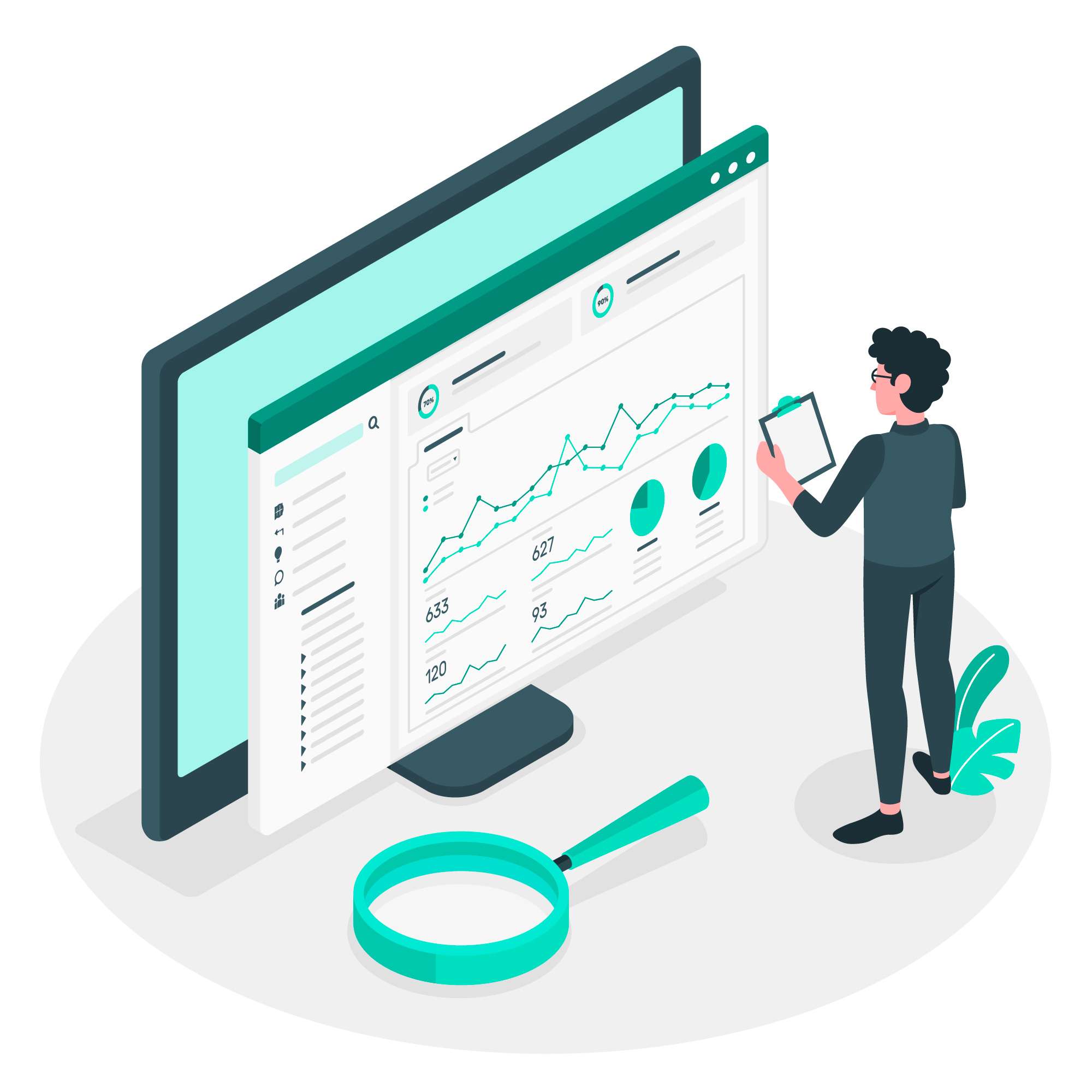Content marketing is important for your business’ success. To generate leads, you’ll need exceptional content that converts users.
That isn’t a single item of content. You’ll need to generate, repurpose, trash, and update a lot of content, and regularly.
One of the best ways to ensure the success of your content marketing campaigns is to maintain a content marketing calendar. This tool allows you to stay organized and be efficient and productive with your content creation.
What is a Content Marketing Calendar?
A content marketing calendar is a tool that helps you to plan, track, and publish your content. It can be used to schedule and monitor the progress of your content marketing campaigns.
Adding data to your content marketing calendar can help you to better understand your audience and what type of content they are most interested in. This information can then be used to inform your future content plans.
A data-driven content calendar can be a document that defines the themes you want to address, the format (e.g., blog post, white paper, video), and the target audience for your content. You can stay organized and on track with your content marketing strategy by using a content marketing calendar.
Content Marketing: Think Strategically to Maximize Impact
Having a content calendar enables you to think more strategically about the content you will be creating and when you will be releasing it. This is important because it helps you to better plan and prepare your content so that it has the maximum impact.
Additionally, adding data to your content calendar can help to inform your decisions and ensure that your campaigns are successful in the long term. Improve and change your content marketing calendar according to the data you gather to increase your traffic and user conversion.
Why is it Important to Create a Content Calendar?
Content calendars are the key to staying organized, and they can be a great way for you to get your content out on time. They provide three important benefits that will bring you more leads and conversions, in the long term.
Proper Scheduling
Having a calendar for your content marketing ensures you complete all your deadlines. If you don’t have a content calendar, there is more of a likelihood that things will get forgotten or lost in the shuffle.
In the end, this means your content marketing suffers, and that you’re not getting the ROI you want.
Increased Efficiency
If you know what needs to be done, and when it needs to be done, it makes it much easier to be efficient with your time. This is especially true if you have multiple people working on the same project.
By having a content calendar, everyone knows what needs to be done and when it needs to be done.
The perfect schedule means never being late.
Team Collaboration
A content calendar helps ensure smooth collaboration within your team. That presumes you share your calendar for everyone to see the deadlines and tasks for the day.
Clear Forecast
A content calendar gives other departments a clear picture of what will happen in the next few weeks. That can help them plan relevant events around the content.
Key Elements to Consider While Creating a Data-driven Content Marketing Calendar from Scratch
Now that you know what a Data-driven Content Marketing Calendar is, we will go over some of the key elements that you must have in your calendar (strategy).
Planning Your Content
Content planning has 3 key steps:
- Defining and Understanding Your Audience
- Finding and Creating Intent-Based Content
- Setting Up Deadlines and KPIs
Define Your Audience
Before you can start planning your content calendar, it’s important to have a clear understanding of who your target audience is. This means taking the time to create a detailed persona for those who will be consuming your content.
Each persona will differ in terms of the way they consume the content you create for them. For example, some may prefer long-form articles, while others may prefer short videos or infographics.
By understanding the preferences of each persona, you can make sure that your content calendar is populated with the types of content that will resonate most with your audience. In turn, this will help you to achieve your ultimate goal of engaging and retaining members.
Finding and Creating Intent-Based Content
When it comes to creating content that will reach and engage your target audience, it’s important to keep in mind that your content must align with the customer’s intent. Educational content, for example, is ideal for those who are just starting to learn about a topic or solution.
Meanwhile, informational content is perfect for consumers who are comparing different options and trying to get more information (duh…) about the topic. And finally, commercial content is ideal for those who are ready to proceed with a purchase.
By creating relevant content for each stage of the buyer’s journey, you can ensure that you’re providing value and answers at every turn. Additionally, organizing and managing your content calendar can help you keep track of what’s been published and ensure that you’re creating a steady stream of fresh, engaging content.
Setting Up Deadlines and KPIs
With your audience and content strategy in place, it’s time to start setting up deadlines and KPIs for your editorial calendar. This will ensure that your content is published on time and is meeting the goals that you’ve set forth.
To do this, simply map out when you want each piece of content to be published and what metric you’ll use to measure its success. Some common KPIs used to measure the success of content marketing campaigns include:
- Number of social shares
- Number of leads generated
- Number of conversions
- Cost per lead
- ROI
By setting clear deadlines and KPIs, you can make sure that your content calendar is working effectively and that you are not wasting time and money on practices that your team can’t deliver.
How to Use Data and Research to Optimize Your Content for the Better
For an optimized and well-written piece of content, you need to look at two kinds of data:
Analytics
When it comes to efficiently managing any content campaign, rates of engagement, conversion, and overall performance should all be at top of mind. Analytics can be used to track progress and drive the creation or distribution of information, both historically and in real-time.
This enables you to validate which content types, themes, and/or channels are working and which are not. Each piece of content’s performance should be visible and reflected in your editorial calendar so you may quickly assess the effects of your efforts and adjust your campaigns on the fly if necessary.
Topical Keywords
When you’re building authority on search engines, it’s important to be organized. One way of being well planned out is by topical keyword grouping, which has recently become the preferred SEO method for content creators looking to establish their relevancy in today’s competitive landscape.
With the latest google algorithm updates, the focus changed from mere keywords to broader keyword groups and related contextual content. Content pillar strategies are popular among SEO professionals for good reason – they work.
By creating several complementary pieces of content (e.g., blog posts or articles) and linking them to a primary pillar piece, you can help Google effectively tie everything together and ascribe authority. Additionally, by incorporating relevant, topically related keywords throughout your content, you can further improve your chances of ranking well on search engine results pages.
Not sure where to start? Here are a few tips:
1. Make sure your primary pillar piece is high-quality and informative. This is the foundation of your content strategy, so it’s important to make sure it’s up to par.
2. Link to your pillar piece from your other pieces of content. This will help Google understand the relationship between your different pieces of content and give extra authority to your primary pillar piece.
3. Use relevant, topically related keywords throughout all of your content. This will help Google understand what your content is about and potentially improve your chances of ranking well for those keywords.
By following these tips, you can create an effective content pillar and keyword strategy that can help improve your SEO efforts.
Creating Your Content Calendar Step by Step
To create the data-driven content calendar, follow these steps.
1. Set Realistic Goals and KPIs
Everything you put on your content calendar should be geared toward achieving your content marketing objectives. However, you won’t know what to write there until you’ve established your Key Performance Indicators (KPI).
A KPI is a metric that measures how well something is working. It assesses your strategies’ performance (or lack thereof) in reaching a given objective.
Let’s assume you want to increase your website’s traffic by 10%.
Page views would be a nice KPI for that objective. That’s because the more views a website’s blog post receives, the more traffic the site receives.
You can decide the particular measures you need to take to attain your objective once you know your KPI.
You may determine the number of blog post views you need to accomplish the 10% increase, for example. If you’re now receiving 20,000 monthly views, a 10% increase would need you to acquire 22,000 total views per month instead.
2. Create Content Themes
Content themes are generally high-quality, broad topics that align with your company’s goals and customer needs. For example, content creation, social media marketing, and email marketing are all likely to attract people who are most interested in purchasing your product.
- You can increase your brand authority by using content themes: Your viewers will see you as the expert in that industry if you write on specialized themes.
- Your SEO will improve: Search engines can readily categorize your site if you confine your material to specified categories.
- Topics are easy to come up with: You won’t have to entertain too many possible themes because you’ve limited your content topics. That means you can prevent decision paralysis, which is caused by too many options, according to Psychology Today.
- You guarantee a positive client experience: When there are only a few content themes to pick from it will get harder for your visitors to get confused. You will be offering more saturated and concentrated content to your visitors.
To make sure that you’re staying on top of your game, don’t just come up with general content themes.
3. Brainstorm Content Ideas
Regular content brainstorming is one technique to ensure you never run out of ideas. You may quickly and simply modify your plans to suit the shifting demands of your organization once you have a list of suitable themes.
Additionally, brainstorming enables you to seize possibilities that may otherwise pass you by.
There are a number of different ways to brainstorm content ideas.
The traditional method is to gather all your team members and have them give you specific ideas under each content theme. This can be an effective way to generate a lot of ideas in a short amount of time.
However, it’s important to remember that not all of the ideas will be usable, so don’t get too attached to any one idea. Another way to brainstorm content ideas is to take some time to brainstorm on your own.
This can be done by free-writing or using mind-mapping techniques. This allows you to capture all of your thoughts and ideas without being influenced by others.
Once you have a long list of ideas, you can then start to narrow down the list and focus on the best ideas.
Whether you brainstorm alone or with others, the important thing is to come up with a lot of ideas so that you have plenty to choose from when it comes time to create your content. Determining how advanced your content will be on the topic of interest to you, depends entirely upon what kind of audience it is that’s going to consume said information.
4. Set Your Deadlines and Publication Schedule
Creating content is only half the battle – if you want your content to be successful, you need to make sure you’re posting it at the right time.
Create a publication schedule now that you have your content ideas. Learn when to upload stuff online.
Tuesdays are ideal for publishing on blogs, according to Coschedule. If your content goals include social sharing, each social media site will have an appropriate publishing time.
5. Review and Analyze Your Results on a Regular Basis
Regularly evaluating your content marketing efforts is crucial to ensure that you’re on track to reach your goals. By taking a close look at things like page views, social media engagement, and other KPIs, you can get a better sense of what’s working and what isn’t.
This information can then be used to adjust your content calendar for future months. For example, if you find that certain types of content perform better than others, you can prioritize those in your next round of content creation.
Or, if you notice that you’re consistently missing your page view goals, you might need to rethink your approach to driving traffic to your site. Regular evaluation and adjustment will help ensure that your content marketing efforts are as successful as possible.
Let your readers inform you as to what they want and don’t want.
To determine what material is engaging and what isn’t, you must evaluate the effectiveness of your content marketing plan. In order to achieve your content marketing objectives, you will know what material to add and remove the next time you build a calendar.
Conclusion
A content calendar is an essential tool for any organization that wants to create and publish content on a regular basis. By brainstorming ideas, setting deadlines, and reviewing your results, you can ensure that your content marketing efforts are as effective as possible.
But in order to take advantage of all these advantages, you must develop a content schedule based on data. Based on your target audience and KPIs, you must strategy. An arbitrary content calendar simply won’t do.







